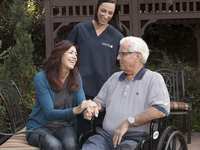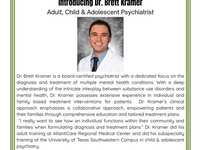- Categories :
- More
Understanding and Addressing Elder Self-Neglect

This past Sunday, communities across the globe recognize World Elder Abuse Awareness Day—a call to action launched in 2006 by the United Nations and the World Health Organization. The goal is simple but urgent: to raise awareness of the many forms of abuse, neglect, and exploitation faced by older adults, and to spark conversations that lead to prevention and protection.
When we hear the term “elder abuse,” our minds often go straight to dramatic scenarios—like a con artist draining a senior’s bank account or a manipulative family member taking advantage of an aging loved one for money or control. However, elder abuse isn’t always physical or financial. It can also take the form of self-neglect, where no abuser is present—but the outcomes can be just as harmful.
One often-overlooked form of elder abuse is self-neglect—a situation where an aging adult is unable or unwilling to meet their own basic needs. While it may not involve an external perpetrator, elder self-neglect is just as dangerous as other forms of abuse and demands our attention and action.
What Is Elder Self-Neglect?
Elder self-neglect occurs when an older adult, often living alone, fails to maintain their own health, hygiene, nutrition, or safety. A recent analysis of several studies estimated the prevalence of self-neglect among older adults and seniors at 27%.
It’s not about stubbornness or lifestyle preferences; rather, self-neglect often is rooted in cognitive decline, physical limitations, mental health challenges, or social isolation. This form of neglect can be especially tricky to identify, because it doesn’t always present as a clear-cut emergency—but the risks are very real.
Common Symptoms of Self-Neglect in Seniors
Family members, neighbors, and professionals should watch for signs like:
- Poor personal hygiene (unwashed hair, body odor, wearing soiled clothing)
- Malnutrition or dehydration
- Untreated medical conditions (bedsores, infections, unmanaged chronic illness)
- Unsafe living conditions (hoarding, lack of utilities, unsanitary home)
- Cognitive decline or confusion
- Social withdrawal and isolation
- Non-compliance with prescribed medications or medical care
These signs often progress gradually and can be easily overlooked—especially if the senior insists they’re “fine.”
By the Numbers: The Reality of Elder Self-Neglect
- According to the National Adult Protective Services Association, self-neglect is the most common report made to Adult Protective Services (APS).
- A study in the Journal of the American Medical Association found that elders who self-neglect have a fivefold increase in risk of death compared to their peers.
- Estimates suggest that 1 in 10 older adults experiences some form of elder abuse—and self-neglect may account for up to half of these cases.
These numbers paint a sobering picture and underscore the importance of awareness and early intervention.
Just One Real-Life Example of Elder Self-Neglect
Mr. Thompson, 82, had always been fiercely independent. After his wife passed, his neighbors noticed he stopped mowing the lawn and picking up his mail. Over time, his appearance became disheveled, and his once-tidy home fell into disrepair. When a friend stopped by unannounced, she found him living without running water and eating canned food past its expiration date. Mr. Thompson wasn’t trying to harm himself—he simply couldn’t manage on his own anymore.
What Can Families and Caregivers Do?
If you suspect elder self-neglect, here’s how you can help:
Start the conversation with compassion. Many seniors fear losing independence and may resist help. Express concern without judgment and emphasize your desire to support—not control—them.
Get a professional assessment. A visit from a physician or home care nurse can help determine if there are underlying cognitive or medical issues contributing to the self-neglect.
Contact Adult Protective Services (APS). In severe or dangerous situations, APS can step in to assess risk and connect the individual with resources. Or, call the ElderCare Locator at 1-800-677-1116 to find help near you. For emergencies, always dial 911.
Offer gradual, in-home support. Companion care, personal care assistance, and regular wellness check-ins can be the first steps toward restoring safety and dignity—without overwhelming the individual.
Engage the community. Neighbors, friends, clergy, or volunteers can help reduce isolation and provide a safety net.
How Non-Medical Home Care Can Help Seniors Who Are Alone
At Amada Senior Care, we specialize in helping older adults age safely at home. Our trained caregivers can:
- Monitor medication schedules
- Ensure proper nutrition and hydration
- Provide assistance with hygiene and grooming
- Help maintain a clean and safe home
- Offer companionship that reduces the risk of isolation
Amada Senior Care advisors also work closely with families to spot early warning signs and guide next steps—before self-neglect becomes a crisis.
Let’s Create a Safer Future for Seniors
Elder self-neglect is often silent, but it’s never harmless. By raising awareness and offering compassionate, personalized support, we can help our aging loved ones maintain their dignity—and their safety.
At Amada Senior Care, we are deeply committed to safeguarding the dignity, safety, and well-being of older adults. If you’re concerned about an aging parent, neighbor, or client, reach out to Amada Senior Care by CLICKING HERE to find an Amada office near you. Together, we can make sure no senior is left to struggle alone.

















